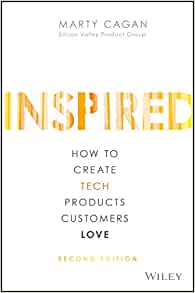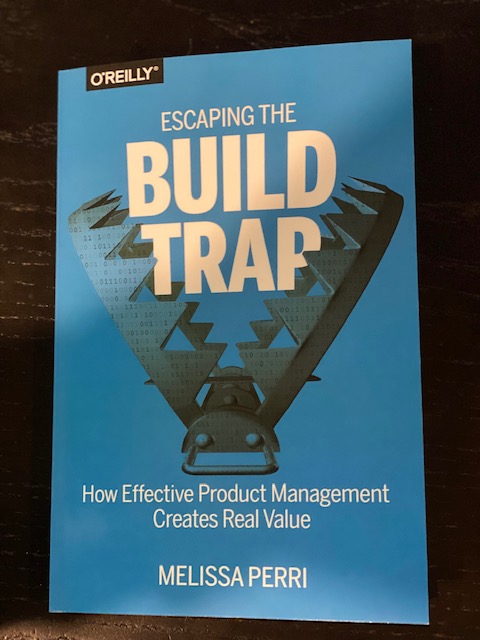Escaping the Build Trap
How effective Product Management creates real value
To stay competitive in today's market, organisations need to adopt a culture of customer-centric practices that focus on outcomes rather than outputs. Companies that live and die by outputs often fall into the "build trap," cranking out features to meet their schedule rather than the customer's needs.
Why I read this book
As software developers our primary job at the end of the day is to build products that are to be used to accomplish tasks, automate repetitive business processes, build businesses and ultimately generate revenue or optimise growth for organisations.
A core issue for most software developers is that often we are actually disconnected from the end users and we primarily are guided by tasks that are created by User Stories and accumulated into some kind of Task Manager like Jira and typically referred to as a Product Backlog and in theory at least we supposed to work on these in Agile fashion. Typically the prioritisation of these tasks may typically be defined by a role that is defined as a Product Owner.
The Agile Software Development process is often touted as the silver bullet to cure all software development problems. However, from the experience I have accumulated of the past 20 years of being contract software developer working across a number of different projects, organisations, countries and business domains, I can honestly say I have very seldom witnessed much of this touted success rate. I've also experienced a vast array of different implementations of Agile with each organisation having tailored it fit their unique environment.
There are often recurring problems associated with Agile software Development and the practice itself in reality has done little to improve the statistics towards project success in some cases in fact the success rate of IT and Software Development projects have even declined.
The Standish Group Chaos Report statistics average around 80% of IT & Software Projects failing, citing the Top 10 factors in most failed IT & Software Development Projects are often cited as:
- Incomplete Requirements
- Lack of user involvement
- Lack of resources
- Unrealistic expectations
- Lack of executive support
- Changing Requirements & Specifications
- Lack of planning
- Didn’t need it any longer
- Lack of IT management
- Technical illiteracy
These are all clear signs that most companies are caught up in what Melissa Perri, has defined as the Build Trap and I have to say after reading this book I completely agree and have at firsthand witnessed many of the scenarios highlighted in the book.
The Build Trap is when organisations become stuck measuring their success by outputs rather than outcomes. It's when they focus on shipping and developing features rather than on the actual value those things produce.
Escaping the Build Trap - How effective Product Management creates real value
Why I like this book
The first thing I like about this book, is that its fairly short and easy to read weighing in at 175 pages, so you can easily read it in a couple of evenings. Secondly, despite this it is also packed with useful practical tips and guides that you can easily start using.
This book also serves as a great accompaniment to Inspired: How to Create Tech Products Customers Love which will help you dive deeper into the world of Product Management. Escaping the Build Trap is a guide to getting out of the build trap with great product management and what it means to transform an organisation to become a Product-Led organisation.
Inspired
How to Create Tech Products Customers Love
How do today's most successful tech companies-Amazon, Google, Facebook, Netflix, Tesla-design, develop, and deploy the products that have earned the love of literally billions of people around the world?
What I learned from this book
Developing new software products is extremely hard work and surprisingly in vast majority of cases its actually the activity and work outside of the software developers remit that actually dictates the success or failure of your software product. You can stack your project or software developer team with as many of the mythical 10X Developers and Unicorns you like but you won't necessarily increase your chances of success.
This book is perfect for software developers involved in building products in any guise, whether it be for internal customers in an enterprise organisation or as customer facing services. The book covers and details how companies of all shapes and sizes fall into the build trap, but more importantly it explains all of the ways to avoid them, be innovative and be a product led organisation.
The book offers quite a lot of practical advice on how to embark and initiate Product Management approaches in your organisation. The book also provides examples and frameworks you can use to transform your organisation to adopting an outcome focused practice of product management.
This book will help you to define a structure and help you to organise to work effectively from a product management strategy.
Even if you're software engineer and have no intention of progressing into a career in Product Management, this book is still very much worth a read, so you can at least understand how you can deliver value to executives and your organisation to help them become successful.
Chapter 6 offers a great overview of some of the typical Product Manager archetypes that can typically be found on projects. I can honestly say, I have been able to identify these archetypes on projects I have worked on!
Chapter 9 offers some great insight on how to organise product development teams and how to identify if your current team make up is less than optimum. The key point to bare in mind is that we should avoid organising around features and instead deliver whole chunks of value.
Perri identifies ways of encouraging good outcomes that are based on the structure of an agile team. While many organisations organise teams around a particular feature or capability this typically creates sub-optimal outcomes.
Chapter 14, details how to come up with a common product vision and to take Product initiatives based on business goals and say how they will be solved product.
Chapter 15 Discusses Product Management process and introduces the concept of Product Management Katas to help understand the problem as well as the overall value of the solution and to avoid just thinking in features. I found this section particularly useful and have tried to implement the concepts and practices.
Why I recommend this book
I generally recommend that software professional should always read books from outside of their immediate sphere of interest or vocation. Often developers will only read blog posts and books related to software engineering, but Product Management actually has more influence on the typical projects we work on than we care to admit. This book is a perfect book to read to gain enough of an understanding of this field and how it affects the success of the products we develop.
One of the key takeaways from this book is to ensure that your budgeting, incentives and organization facilitate innovation, creativity, experimentation and ultimately being Product-led. Overall this is an excellent succinct resource for all members on software teams to learn and understand.
Escaping the Build Trap
How effective Product Management creates real value
Melissa Perri explains how laying the foundation for great product management can help companies solve real customer problems while achieving business goals. By understanding how to communicate and collaborate within a company structure, you can create a product culture that benefits both the business and the customer. You'll learn product management principles that can be applied to any organization, big or small.
- What is this Directory.Packages.props file all about? - January 25, 2024
- How to add Tailwind CSS to Blazor website - November 20, 2023
- How to deploy a Blazor site to Netlify - November 17, 2023


